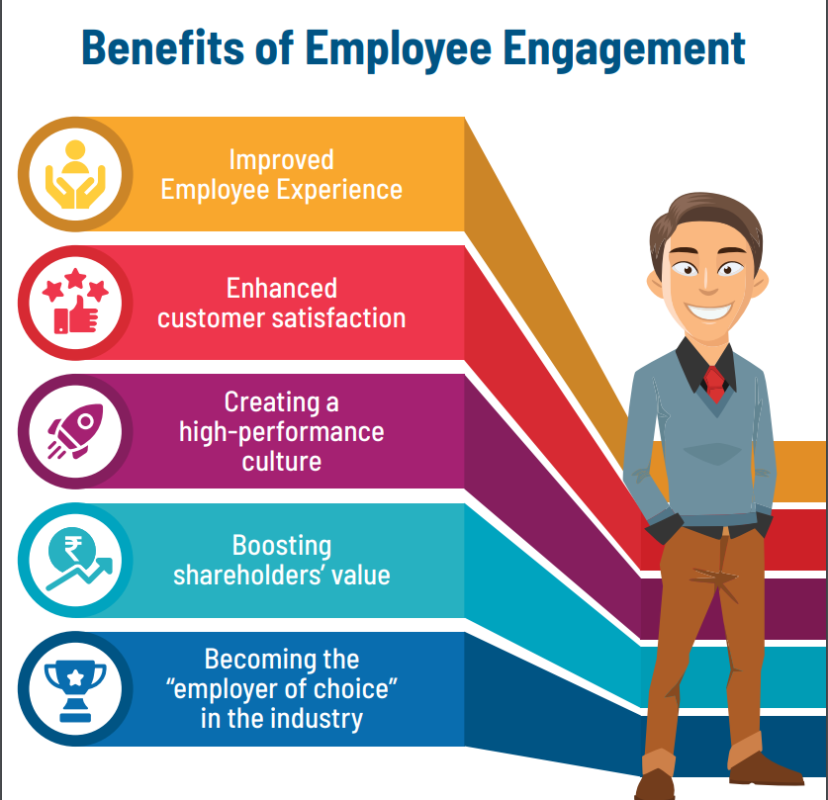How important and relevant Is it for traditional SMEs?
PART ONE OF TWO PARTS
I work with SMEs as a Transformation Consultant and over decades I have received mixed responses from the promoters related to Employee Engagement. Some of them have adopted and developed great programs for employee engagement, achieving different levels of success. But many of them still find it overrated, and they believe it is more relevant to large IT companies and start-ups. This exactly is what gets covered in this article. Though I have given my recommendations, the choice still is with the SMEs.
Before we reach any verdict, in favour or against, let us first understand what Employee Engagement is and what are its benefits.
Employee Engagement is a workplace management approach developed to ensure that employees are committed to their organization’s goals and values, motivated to contribute to organizational success, and are able at the same time to enhance their own sense of growth and well-being. The success of the Engagement Program transforms the employees into Brand Ambassadors, who inspire all the interfaces internally and externally.
To broadly define it, Employee Engagement includes, suggestion schemes, competitions, and contests for teams and their families, learning & training, get-togethers, meets, and celebrations; with the clear-cut objective of achieving quality employee experience.
Benefits of Employee Engagement
#1 Improved Employee Experience
Employees are the foundation of every business; without them, businesses don’t succeed. As a consequence, an improved employee experience positively impacts employee engagement. Good employee experience and high employee engagement help increase retention levels, benefits employees’ work life, and enhance job satisfaction.
#2 Enhanced customer satisfaction
Haven’t we heard – Happy Employees Create Happy Customers? Employee engagement directly impacts the customer experience. In fact, as per an article on Forbes.com indicates that employees at companies with excellent customer experience are 1.5x more engaged than their competitors.
#3 Creating a high-performance culture
A successful Employee Engagement plan contributes to increased efficiency and, eventually, improves business results and profit margins. When everyone in the organization performs, the culture transforms, and they inspire each other towards creating success.
#4 Boosting shareholders’ value
It sounds obvious that employees who are interested (and engaged) in their jobs not only outperform themselves but also their competitors. These businesses benefit from increased sales, lower absenteeism, fewer shortages, better safety, higher efficiency, more incredible innovation, and lower operating costs. It leads to a higher return on investment for stakeholders and investors.
#5 Becoming the “employer of choice” in the industry
In these times, when hiring and retaining good talent is challenging, a great and sustainable employee engagement program can actually create internal Brand Ambassadors.
Employer Marketing is emerging as an important concept to attract good talent. Companies certified as “Great Place to Work” or Top Places to Work” have a sustained and effective Employee Engagement Program in place.
The goal here is simple. You should receive (and select) resumes of higher-caliber talents for an open position compared to your competitors. Planning a great employee engagement strategy is the first step toward being an employer of choice and reaping the advantages that come with it.
7 Commandments of Effective Employee Engagement that lead to enhanced productivity
#1 Adopt an inverted Approach
Simply said, this means that the management should use a bottoms-up approach in the organization, where the inputs and ideas should be welcomed by the employees working at the lower rungs of the hierarchy. This would require surveys related to their concerns and challenges and finding out what will keep them engaged.
The more you ask for their opinions, the more they feel esteemed, entitled, respected, and like they belong to the organization.
Therefore, it is a good idea to get the surveys done among employees before developing an Engagement Program for them. The survey should cover the SWOT, which will give insights into what employees think about the company.
#2 Two-Way Transparent Communication
There is nothing new, when it is said that organizations should promote two-way communication – from top to bottom and also the employees should be encouraged to share their concerns so they don’t feel ignored or unvalued. Top business leaders generally believe in the open-door policy and do not use “top-secret” information to their advantage.
In my experience consulting with small and medium businesses, the concept of ‘Suggestion Schemes’ has been successfully implemented. That allows employees, working at all levels, to share their suggestions which can contribute to the performance and productivity of the organization. The best suggestion, that is implemented is suitably awarded and the picture of the winner goes on the notice board and the internal newsletters.
While two-way communication is encouraged, it will be important to mention that it has to be transparent. The possibility of the effectiveness of employee engagement increases, when the employees are kept out of the dark. If organizations maintain secrecy and share information on a “need-to-know” basis, it will likely cause lower engagement rates among their employees. Transparency wins trust when employees get to understand how corporate decisions will affect the workplace or how they should deal with situations.
#3 Team Participation at Organizational Level
In every organization, each member has a role to play and fulfill a specific task toward a common organizational goal. Therefore, it is important to encourage a community spirit among your employees. Any engagement activity that binds all the employees in a common thread, a common mission, can help. This could be from organizing a big annual event to simply taking a team out to lunch.
Community Service, working for a cause through any NGO, or taking up any social initiative, takes engagement to many notches up. Many of my consulting clients have taken up my award-winning social initiative ‘Phenk Mat – Gaadi se Sadak Par’ in which all the employees had participated and spread across the country. That program not only engaged them with the Organization but also gave them a status in their respective communities.
#4 Acknowledgement
Leadership Author and Coach, Dwight Frindt said, “Acknowledgement & celebration are essential to fuelling passion, making people feel valid and valuable, and giving the team a real sense of progress that makes it all worthwhile.”
In my experience, I have noticed that if employees do not get enough recognition for their work, they do not deliver their maximum potential and may engage in wanted behaviour. Especially the highly trained and qualified talent starts looking for job opportunities outside. Declaring monthly, quarterly, and Annual Awards & Acknowledgements keep them going. Of course, having fair, parameter is a prerequisite to the success of the program.
#5 Personal Growth
Every employee, junior or senior expects growth – both in terms of pay package and in position. Therefore, it is important that good talent among your teams is identified and chosen for nurturing.
Though everyone that you hire should be fostered and polished to assist in the long-term growth of the organization, only some of them will shine. Therefore, it is important that every employee is given an opportunity to learn and upgrade themselves. This can be done either by running an in-house proprietary training program or sponsoring your employees for external training. This way, you are not only investing in the future of your company but also creating a sense of loyalty among your employees.
Remember, every employee loves a company that supports them in their professional career and adds value to their personal lives. Ensure their personal growth and you will reap the benefits.
#6 Define a Success Roadmap
In continuation to the point above, I would reiterate that all employees are ambitious, and want to have their dreams fulfilled, within a specific time period. Especially in modern times, this applies most if you hire millennials in your organization. They are more conscious about where they will stand in the next five or ten years. They need to know there are sufficient growth prospects for the role they are fulfilling.
Defining a proper roadmap to success is yet another pillar of a successful employee engagement strategy. This gives direction to all team members with an eye on the common organizational goal.
#7 Hire Competent Managers
The success of an Employee Engagement Program heavily depends on how it has been shared down the hierarchy. Whether employees have been enrolled in the process or not, have they actually bought into the idea?
Therefore, it is important that the Managers that we have in the middle are competent and capable of handling the employees. These Managers are the bridges between the top management and the employees at the bottom of the hierarchy.
While organizations can choose to educate their managers on how to better engage their employees, it is always better to hire a capable manager first. Check their professional background and try to see if they are suited for the tricky job waiting for them.
My recommendation is to have an enrolment meeting with Managers first so that they are enrolled and inspired enough to take it forward with their respective teams.
The verdict.
Nurturing employee engagement is vital to the long-term success of your organization. You should start by identifying what the issues are and then devise effective remedies. Whether you’re implementing a new learning & development initiative, a rewards and recognition program, or another employee engagement solution, make sure you understand the objectives, purpose, priorities, and desired outcome of the program and how it advances your organization’s goals. Then you’re well on your way to setting up an effective employee engagement plan.
In PART TWO in the next edition, I will cover various programs that can be implemented by SMEs and I will try and get few guests on board to talk about their organizations. The next edition will also include the challenges that are faced during implementation and what needs to be done to address them.


